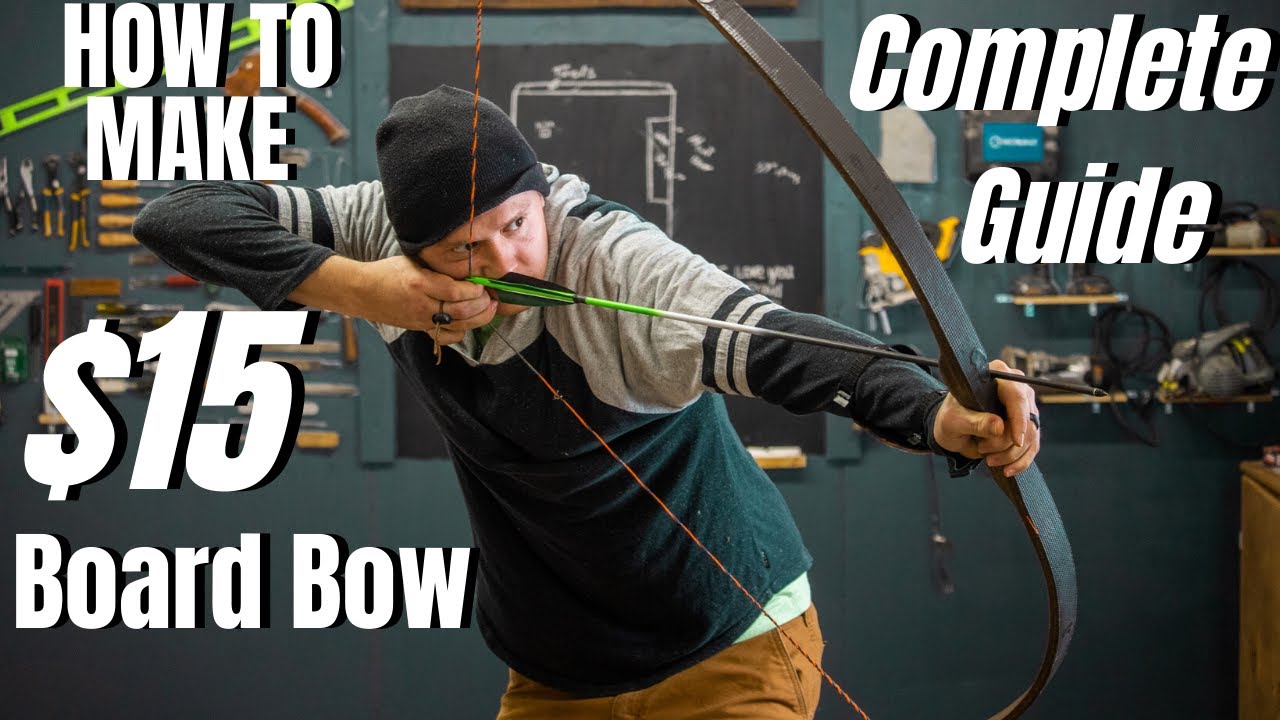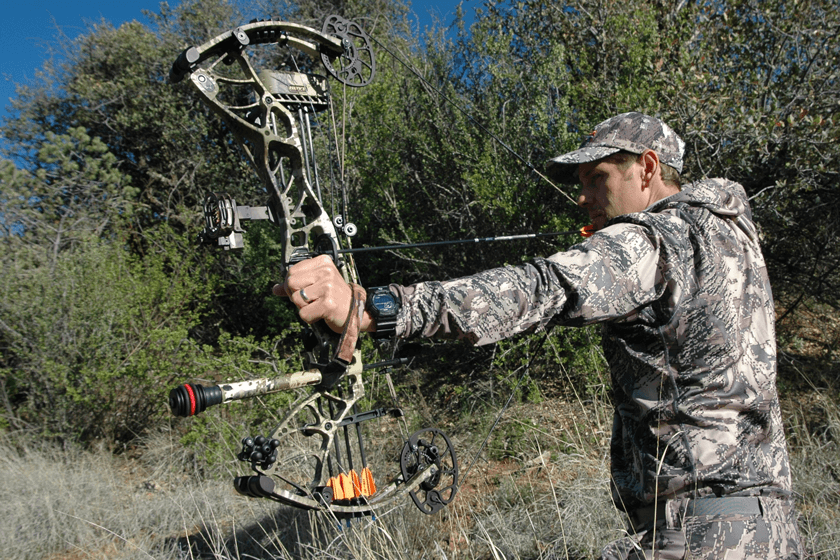To make a wood longbow, first select a suitable piece of wood and shape it into the desired bow shape. Then, attach a string to the ends and ensure it is properly tensioned.
Finally, finish the bow by sanding and applying a protective coating. Making a wood longbow involves shaping the wood, adding a string, and finishing the bow. This article will guide you through the process of making a wood longbow, providing step-by-step instructions for a successful outcome.
With some patience and attention to detail, you can create your own handcrafted wood longbow that is both functional and beautiful. So, let’s get started with the materials and tools you’ll need for this project.

Credit: www.amazon.com
1. Selecting The Right Wood For Your Longbow
Selecting the right wood for your longbow is crucial. Consider factors such as strength, flexibility, and durability. Popular wood options for longbows include yew, hickory, and osage orange. When assessing the quality of wood, look for straight grain, absence of knots, and uniform color.
Inspect the wood closely for any cracks or imperfections. This will ensure a sturdy and reliable longbow that performs well. When crafting a longbow, the choice of wood directly affects its performance and longevity. So, choose wisely and take into account the specific requirements of your longbow project.
Remember, the right wood is key to a successful longbow-making endeavor.
2. Essential Tools And Materials For Longbow Crafting
Crafting your own wood longbow requires the right tools and materials. To begin, you’ll need a sturdy workbench, clamps, and a sharp knife. A drawknife is essential for shaping the wood, while a rasp helps smooth out the curves. Additionally, sandpaper is necessary for a polished finish.
As for the materials, select a suitable piece of wood, such as yew or hickory, and ensure it’s properly seasoned. Remember to wear protective gear, including safety goggles and gloves, for your own safety. When crafting your longbow, always work in a well-ventilated area and follow safety precautions diligently.
With the right tools, materials, and safety measures in place, you’ll be well on your way to creating your very own wood longbow.
3. Preparing The Wood For Longbow Construction
Preparing the wood for longbow construction involves several important steps. To begin, techniques for removing bark, knots, and defects must be employed carefully. This ensures a smooth and even surface for the longbow’s construction. Additionally, it is crucial to check that the wood is straight and free of any warping.
This can be achieved by inspecting the wood closely and making any necessary adjustments. Properly preparing the wood is essential for creating a high-quality longbow that performs optimally. By following these step-by-step instructions, you can ensure that your wood is ready for the next phase of construction.
So, let’s dive into the process of preparing the wood for your longbow project.
4. Shaping And Tillering Your Longbow
Understanding the concept of tillering is crucial in shaping and tillering a wood longbow. Techniques for shaping the bow stave play a significant role in achieving the desired bow shape. Proper tiller symmetry is essential for optimal performance. This involves carefully considering the balance and flex of the bow limbs.
To shape the stave, you can use various tools and techniques like rasps, draw knives, and scrapers. It’s important to remove excess wood gradually to avoid weakening the bow. Achieving proper tiller symmetry involves carefully comparing the bend of each limb and adjusting accordingly.
This ensures that both limbs have equal draw weight and flexibility. By following these steps, you can successfully shape and tiller your wood longbow for a satisfying and effective shooting experience.
5. Adding Tips And Nocks To Your Longbow
Adding tips and nocks to your wood longbow is an essential step in the construction process. There are various types of tips and nocks available for longbows, each with its own advantages and considerations. To attach the tips and nocks, follow these step-by-step instructions carefully.
Ensure precise alignment to achieve accurate shooting and improve the overall performance of your longbow. By paying attention to every detail of this process, you will be able to enhance the functionality and longevity of your wood longbow. Experiment with different types of tips and nocks to find the ones that suit your shooting style and preferences.
Mastering the art of attaching tips and nocks will transform your wood longbow into a powerful and reliable archery tool.
6. Stringing And Testing Your Wood Longbow
Stringing and testing your wood longbow is crucial for its proper functioning. To correctly string your longbow, make sure to follow the proper technique, ensuring safety and efficiency. Additionally, it is important to check the brace height and draw weight to maintain optimal performance.
Measure the brace height by using a ruler or a specific instrument designed for this purpose. To check the draw weight, use a scale or consult a professional. Conducting a preliminary shooting test can help identify any adjustments needed for accuracy and comfort.
By paying attention to these details, you can ensure that your wood longbow is strung correctly and performs at its best.
7. Applying Finishes And Protecting Your Longbow
Applying the right finishes is crucial to protect and enhance the wood of your longbow. There are various types of finishes available for this purpose. To begin, follow a step-by-step process when applying these finishes, ensuring even coverage. Additionally, remember to maintain and preserve your wood longbow by regularly inspecting it for any signs of wear or damage.
This includes keeping it clean and dry, avoiding exposure to extreme temperatures, and storing it properly. By taking these measures, you can prolong the lifespan of your wood longbow and enjoy its performance for years to come. So go ahead and apply the right finishes, and protect your longbow for optimal use.
8. Advanced Techniques For Customizing Your Longbow
Advanced techniques for customizing your longbow can elevate its aesthetic appeal and functionality. By incorporating decorative designs and carvings, you can create a unique and personalized longbow that stands out. Adding grip overlays not only enhances comfort but also provides better stability during use.
You can explore different bow styles and modifications to cater to your individual preferences and shooting style. Customizing your longbow allows you to create a tool that truly reflects your personality and skill level. With attention to detail and craftsmanship, you can transform a simple wood longbow into a work of art that is not only practical but also visually appealing.
Take your bow-building journey to the next level by learning and implementing these advanced customization techniques.
9. Tips For Longbow Shooting And Maintenance
Longbow shooting requires proper technique and regular maintenance. To shoot accurately, remember the basic principles of stance, grip, and anchor point. Keep your longbow in optimal condition by following maintenance routines such as waxing the bowstring and inspecting for any cracks or damage.
Troubleshoot common issues like arrow rest alignment or string twists, and learn how to address them effectively. Regularly check the bowstring for fraying or signs of wear, and replace it if necessary. Additionally, make sure the bow limbs are properly aligned and there are no loose screws or fittings.
By following these tips for longbow shooting and maintenance, you can ensure a consistent and enjoyable experience with your wood longbow.
10. Safety Precautions And Considerations
When making a wood longbow, it is essential to prioritize safety precautions and considerations. Proper handling and storage practices are necessary. Protect yourself and others by following these important guidelines.
Frequently Asked Questions Of How To Make A Wood Longbow
How Long Does It Take To Make A Wood Longbow?
Creating a wood longbow typically takes anywhere from 15 to 40 hours, depending on experience and tools.
What Wood Is Best For Making A Longbow?
The best wood options for making a longbow include hickory, yew, and osage orange due to their strength and flexibility.
Can I Make A Longbow Without Specialized Tools?
Yes, you can make a longbow with basic tools such as a knife, rasp, and sandpaper, though specialized tools can make the process easier.
How Do I Choose The Right Draw Weight For My Longbow?
To choose the right draw weight for your longbow, consider your physical strength and shooting ability, starting with a lower weight and gradually increasing as you get comfortable.
Conclusion
Crafting a wood longbow is a rewarding and fulfilling endeavor that allows you to connect with nature and unleash your inner archer. By following the step-by-step instructions outlined in this guide, you can create a unique and powerful longbow that suits your needs and preferences.
From selecting the right wood and shaping it to perfection, to stringing and finishing the bow, each stage of the process requires patience and skill. By investing time and effort into making your own longbow, you not only acquire a valuable weapon but also gain a deeper understanding and appreciation for the art of archery.
Remember to always prioritize safety and consult experts if needed. So, go ahead, grab your tools, and embark on this exciting journey of crafting your very own wood longbow. Happy bow making!

General Manager & Auditorial Head.
Killian Jake is a World Sports Traveler and hobbyist sports lover. By exploring different sorts of playing modules like indoor, outdoor, and many more. As for professionalism and writing, it’s helpful to give you the right suggestions on different games and sports.





